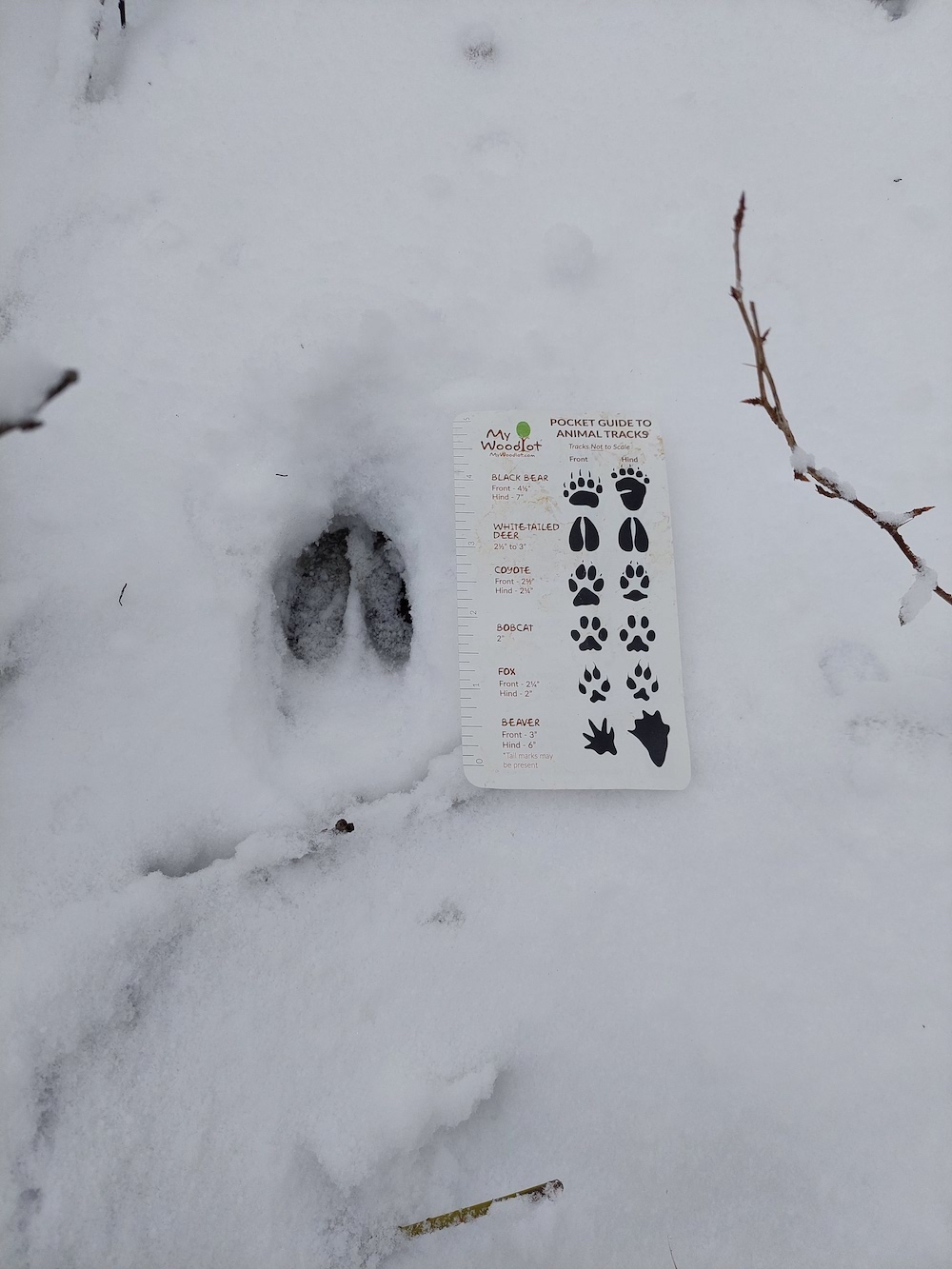I was inspired by a new climate change activity on MyWoodlot called See How My Woods will Change. Specifically, there is a tree flagging exercise that helps to highlight trees species with Poor, Fair, and Good capabilities to cope with climate change impacts in the Northeast.
It is great for giving a potential preview of your woods’ future condition and facilitating forest management planning. One mid-February afternoon, I decided to try the activity in my 2-acre woodlot in Stamford, NY.
I selected an area that contained most of the common tree species in my woodlot. I spun around in a circle, using a 10-factor wedge prism to estimate basal area and determine which trees I would mark with flagging. I counted 12 trees that were ‘in’ the plot as determined by the prism. They included 4 white ash, 3 black cherry, 3 sugar maple, and 2 quaking aspen trees. White ash and quaking aspen trees have a Poor capability to adapt to climate change impacts in the Northeast, while black cherry and sugar maple trees have Fair and Good capabilities, respectively. I used bright yellow-green flagging for Good trees, flat yellow for Fair trees, and bright red for Poor trees.
With emerald ash borer (EAB) knocking on the door, I may lose a third of the trees in my plot in short order. Furthermore, the canopy gaps created by dead ash trees are unlikely to be filled by understory trees because of poor forest regeneration, or a lack of young trees that will grow up to reach the canopy. Therefore, when disturbance events like wind, ice, or insects remove canopy trees in my woods, the risk of forest loss is real.
Obviously, the results of this tree flagging exercise weren’t great. However, I could try to help my woods along. I could harvest some of the ash trees for firewood and hopefully make a few gaps in the canopy. Then I could replant with climate-change capable species (e.g., black cherry, sugar maple, or northern red oak) and trial a low-cost deer fencing option to protect the young trees. Conversely, I could try growing different forest crops in the canopy gaps as outlined in this video from Cornell. Now we’re talking!
I don’t know how things will play out (who does?), but this tree flagging exercise helped me to run through various scenarios in my head. I encourage you to try it in your woods, if only to get a better idea of the trees you have. All you really need is some flagging and the ability to identify your most common trees. Thanks for reading.










